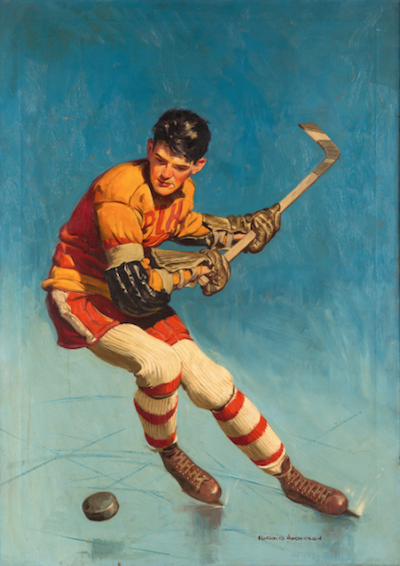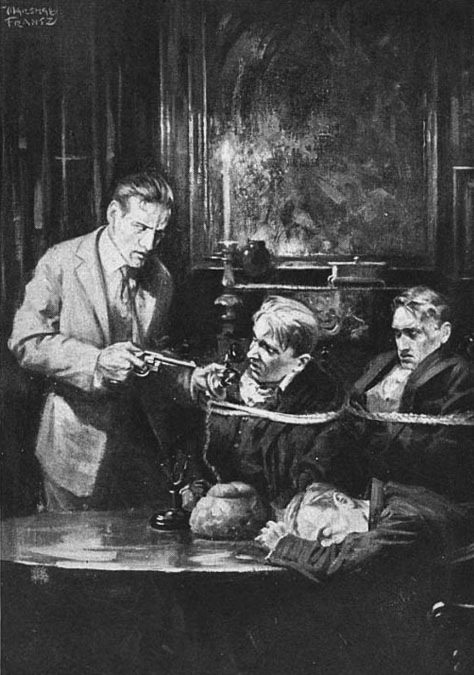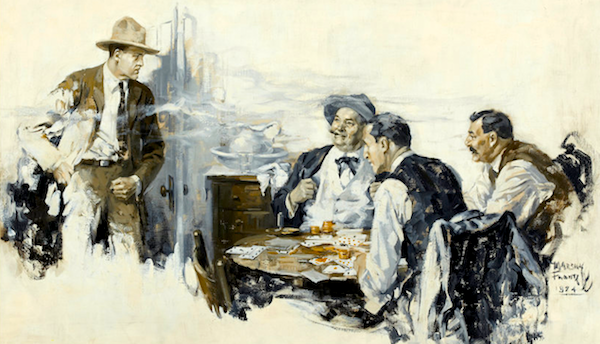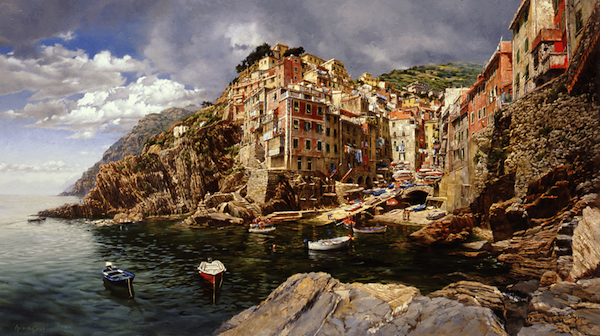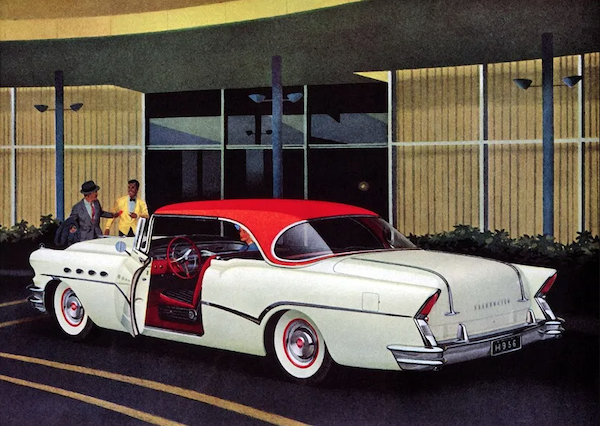1963 Pontiac Grand Prix at Monaco's Hotel de Paris
Arthur "Art" M. Fitzpatrick (1919-2015) is famed in illustration circles for his classic 1959-1972 series of illustrations for Pontiac made in collaboration with Van Kaufman. Fitzpatrick rendered the cars and Kaufman furnished the settings and people. There was some overlap in that settings and people might be reflected on the cars. I previously wrote about him and the Pontiac illustrations
here.
Fitzpatrick's Wikipedia entry is
here. An interview of him is
here, and includes the following regarding his way of working on Pontiac ads such as that shown above:
"I photographed a car [for General Motors testimony at a congressional hearing] … same position/view with 3 different lenses, 35, 50, and 120mm. Photographers, for reasons that continue to escape me, were using long lenses, which shorten a car, making the rear wheel look bigger then the front ones. I always used a 35mm lens (wide angle). I made a pencil line drawing of an exact tracing of 35mm photo, and on another sheet over that did my “enhancing”.
Further detail regarding the "enhancing" is
here, including this snippet:
"To produce his famous "wide" look, Fitzpatrick traced photos of the new car, cut the racings into pieces, then "stretched" the car into bolder proportions. "We wanted pictures that were different," Fitzpatrick says. "Impact is the name of the game, so we went with predominately front views -- even cropping the cars so that they looked too big for the page."
Fitzpatrick began his illustration career in 1946 with a contract for Mercury. He freelanced for other brands until 1953 when he and Kaufman began working for General Motors. He did Buick illustrations at first, then in 1959 began the famous Pontiac series. Following Pontiac, he and Kaufman made some advertising illustrations for GM's (at the time) Opel subsidiary in Germany.
Below are a few examples of his illustrations for brands other than Pontiac.
Gallery
This illustration is of a 1948 Mercury "woodie" station wagon. Fitzpatrick was still early in his advertising image career. The perspective is a bit distorted (probably intentionally), and proportions of some of the details such as the headlights seem incorrect (possibly not intentionally).
A 1949 Mercury convertible. Now we see a typical "Fitz" rendering of an automobile.
I do not know for certain if Fitzpatrick made this illustration of a 1952 or '53 Nash, but it looks like his work.
The same can be said for this 1953 Plymouth illustration.
Illustration of a 1954 Buick by Fitzpatrick.
A 1956 Buick illustration.
1971 Opel, posed in front of Paris' famous Café de Flore on the Left Bank. Note the Citroën camion in the background that adds to the atmosphere.
1971 Opel Manta. These Opel depictions have a more solid feel than the Pontiac illustrations -- probably intentionally to make them seem less Pontiac-like..
Illustration of a 1972 Opel Commodore.
Cross-posted at: carstylecritic.blogspot.com











